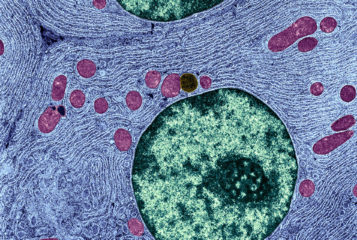A gene-editing technique that may prevent mutated mitochondrial DNA (mtDNA) from being passed down from mother to child has shown success in an animal study.
Developed by researchers at the Salk Institute for Biological Studies, in La Jolla, California, the technique works by using DNA-cutting enzymes to delete mutated mtDNA, leaving healthy mitochondria intact. By reducing the amount of faulty mtDNA, the technique aims to restore the balance in favour of healthy mitochondria, reducing the amount of faulty mtDNA passed down to offspring to the point where it does not result in disease.
'This technique is based on a single injection of mRNA into a mother's oocytes or early embryos and therefore could be easily implemented in IVF clinics throughout the world', said Professor Juan Carlos Izpisua Belmonte senior author of the study.
He added: 'This technology is not perfect, it cannot eliminate all the bad DNA, but by eliminating some, it'll be enough to prevent the transmission of these diseases to the kids of affected mothers.'
The researchers first demonstrated the technique by targeting one of two types of mtDNA carried in mouse eggs, which resulted in the birth of healthy mice with low levels of the targeted mtDNA and which also displayed normal mitochondrial function. These mice subsequently gave birth to mice with 'barely detectable' levels of the targeted mitochondria.
The researchers then applied the technique to target human mtDNA mutations inserted into mouse eggs known to cause two mitochondria-related diseases. The application of the technique resulted in a 'significant reduction' in mutated mtDNA.
'We expect that this method will reduce the percentage of mutated mitochondrial DNA below the threshold for triggering mitochondrial diseases in humans', Professor Belmonte said.
There are currently no cures or effective treatments for mitochondrial disease, which can lead to serious health problems. The researchers say the technique is 'safer, simpler, and more ethical' than mitochondrial donation (see BioNews 789, 790 and 790), as the gene-editing technique avoids the need to use DNA from three people. Professor Belmonte also says that the technique could be safer than nuclear genome editing.
The team now plans to test the safety and efficacy of this technique in surplus eggs donated by fertility patients with mitochondrial diseases.
Sources and References
-
Selective Elimination of Mitochondrial Mutations in the Germline by Genome Editing
-
Hopes raised for new genetic therapy to prevent inherited diseases
-
Gene editing could prevent mitochondrial disease in children
-
Scientists develop technique that could stop a genetic disease being passed on to future generations
-
Genome editing in mitochondria prevents inheritance of diseases






Leave a Reply
You must be logged in to post a comment.